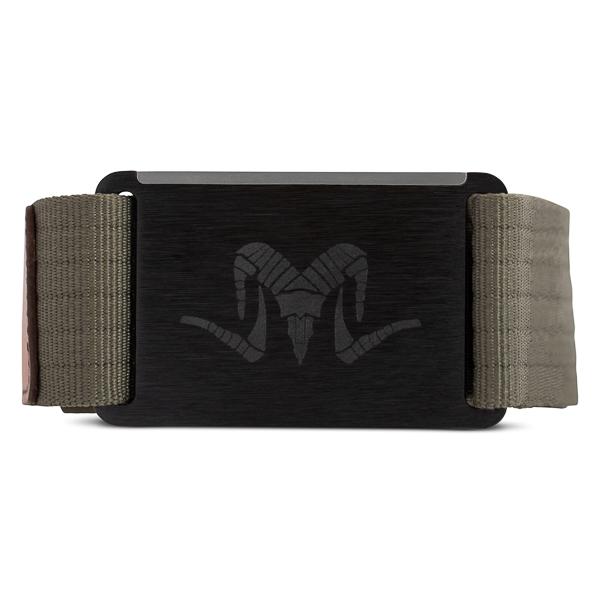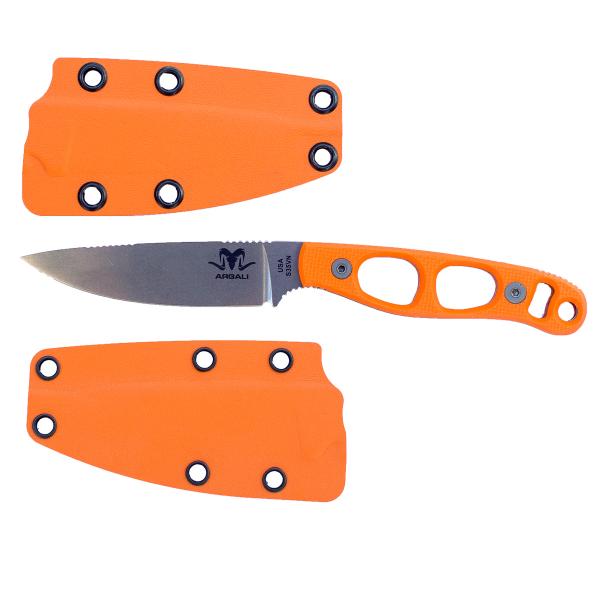
The Ultimate Backcountry Hunting Belt
By Brad Brooks
The holy grail for gear nerds like us is to create a multi-use product. If you can make a product with at least two uses, it allows you to take something out of your pack and save you weight. That was the insipration for creating the Kodiak Belt, which is the only belt on the market that is a fully functioning belt for hunting, fishing and every day use that can completely shape, sharpen and hone any knife, broadhead or fishing hook.
It took two years of design, field testing and development to create what we think is truly a game changing piece of gear for every hunter, fisher and outdoors person.
The Backstory

As a company that makes knives, we get a fair number of questions about knife sharperners. But we weren't interested in just making another field sharpener. We wanted to make something innovative and unique. The idea of integrating sharpening materials into a belt was simple enough, but figuring out how to design a product with the right materials took a long, long time. 2+ years of trial, error, frustration and many nights of despair to be exact.
Knife sharpening features aside, we wanted the Kodiak Belt to be the best belt we could make for every day hunting use. We've used a lot of high end webbing belts, and while there are some good ones out there, they all use similar webbing capture systems that I've always felt does not work well under a hip belt and a heavy pack. The "lump" as we refer to it, is created when most webbing capture systems double back, but it is also created by the shape of the vast majority of webbing belts. It is a common style of belt that can capture webbing well, but it leaves you with a webbing tail and an uncomfortable lump that digs into your stomache.
We made this product to solve the problem of a belt that was comfortable to wear under a backpack as a stand alone belt, AND we wanted to make it out of materials that could fully sharpen any knife, broadhead or hook. And we did just that, and we think you'll agree. With the Kodiak Belt, you will never have to carry a knife sharpener again, because you're wearing it.
How to Wear it
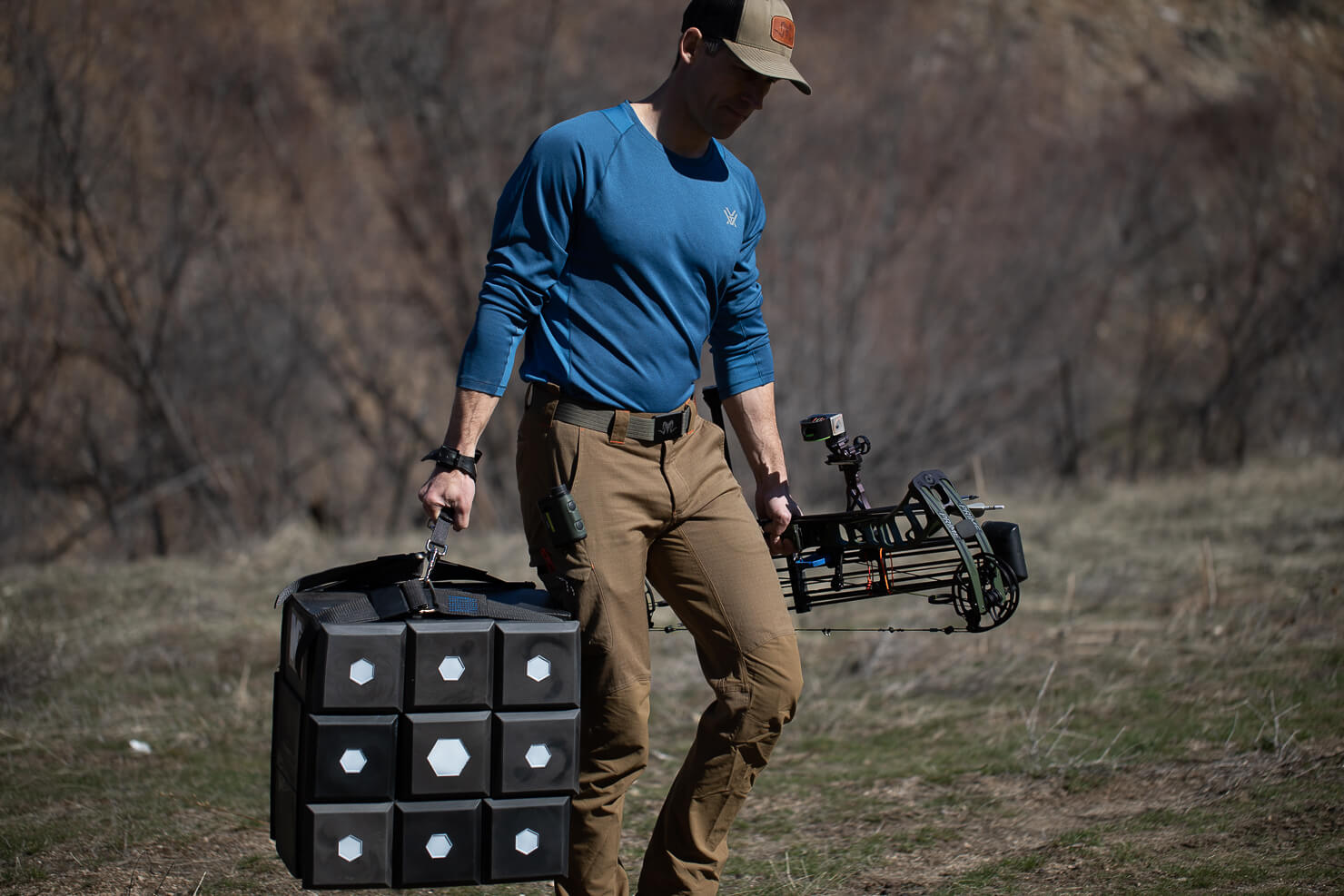
The first thing you will notice is the Kodiak Belt doesn't work like most webbing belts, and that is very intentional. In order to avoid the "lump" created by most webbing belts, we used a webbing capture system that relies on fairy magic and physics to create a comfortable fit when worn under a pack as well as a webbing capture system that is easy to use and quick to take on and off. The webbing is held in place by the friction created between the webbing and the angle that it inserts through the vertical slot on the belt. It looks different, but it works.
When putting the belt on, you feed the tag end of the webbing through the front of the belt and keep pushing the webbing through the back side of the belt towards the wearer's left side. Here's where the fairy magic and physics come in. The angle of the webbing feeding through the slot on the buckle create a natural "locking" bite that will not slip when worn and yet is easy and quick to adjust. To "break" the iron grip free, just push the right side of the buckle in towards your stomache and the webbing capture will break free.
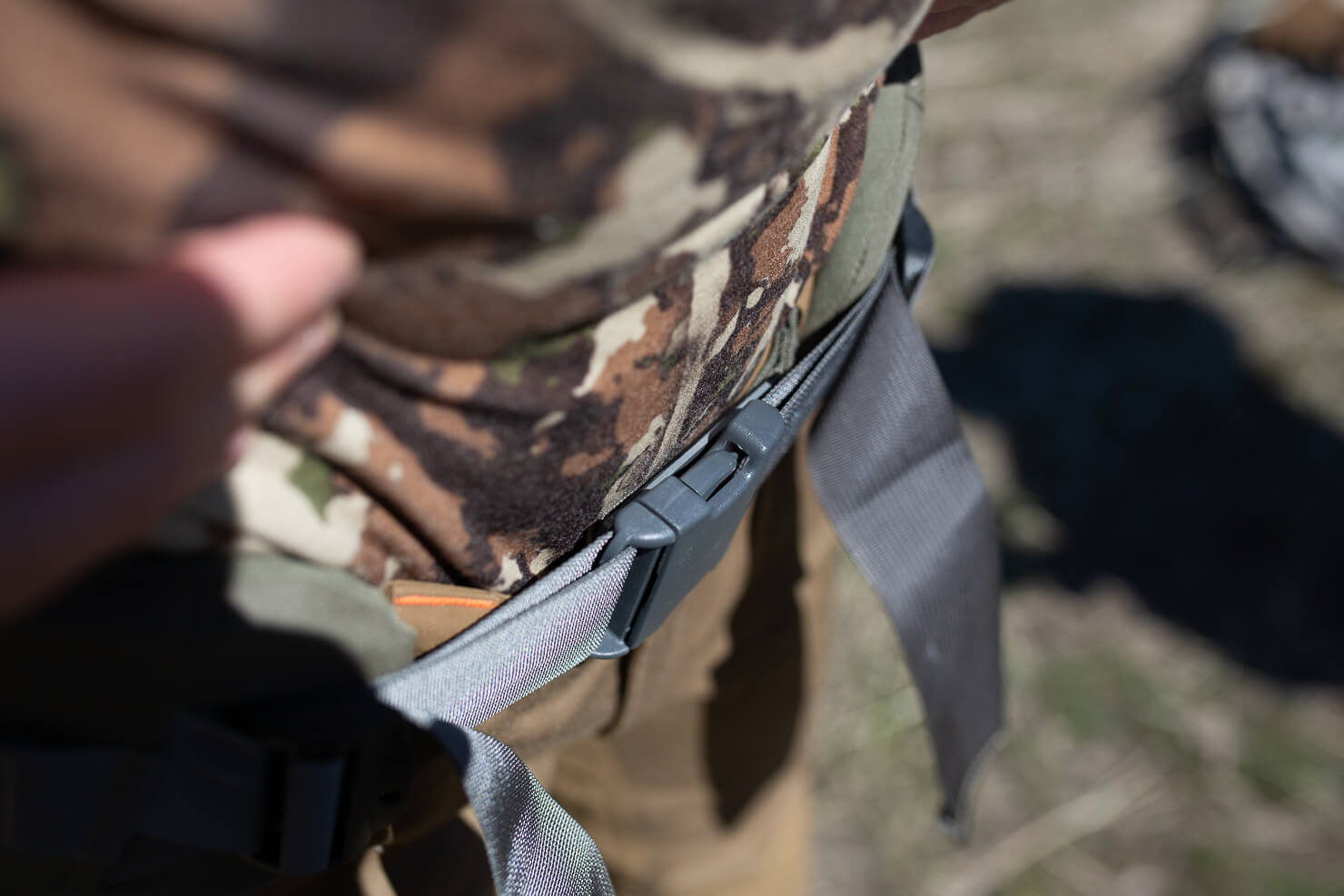
You'll also notice you don't have an annoying tag end of your belt to tuck away as the tag end is between your pants and the belt. Our webbing and buckle system creates a flat profile that mirrors the profile of backpack hip belts, which eliminates any discomfort when worn under a pack and creates a comfortable fit.
Sharpening Materials
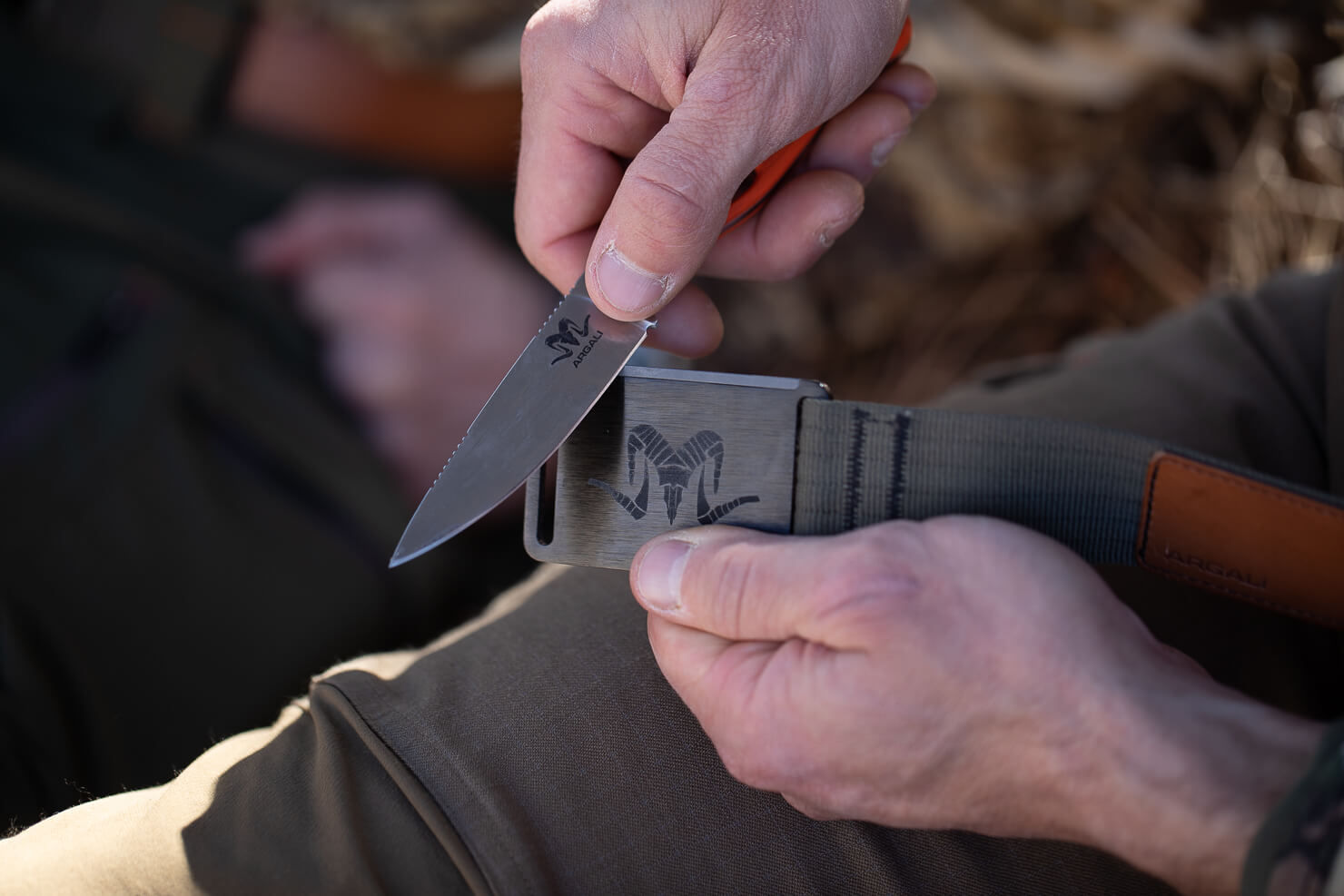
There are three unique ways the Kodiak Belt can sharpen any knife, broadhead or hook. Figuring out what materials to use, and where to put them is where the simplicity of the design really shines.
- Vegetable Tanned Leather Strop. The 6" piece of leather sewn into the webbing will be all some users will need to use in the field to keep their knife sharp. Stropping is easy to do, and can be a very effective way of sharpening a knife.
- Tungsten Carbide Sharpening Bar. The Carbide bar on the top of the buckle can be used in the same way a ceramic sharpening rod is used. Using tungsten carbide to sharpen a knife is unique, and is one of the more innovative features of the Kodiak Belt. Tungsten Carbide is a very hard material. It is used to drill into the earth through rock, as well as for industrial applications. Because of how durable it is, in some applications it is a superior product to ceramic for sharpening, and it will last a long time as a sharpening implement due to how tough it is. By machining a small strip and embedding it into the top of our aerospace grade aluminum buckle, the carbide sharpener can do a lot to sharpen any knife or broadhead.
- Diamond Coated Plate. The icing on the cake of the Kodiak Belt is the 800 grit diamond grit plate that is machined into the back of the buckle and sits flush with the aluminum body. If for some reason you need to re-shape your blade, the fine grit diamond coating will come in handy. We also integrated a fishing hook groove for all you fish whisperers out there.

How to Use it as a Sharpener
Before you can use your belt as a sharpender you will need to loosen the belt and pull the buckle away from your torso to a safe, comfortable distance. Safety is usually third for us, but in this case it should be first. A deep knife gash in the bakcountry can be a serious situation. It isn't a bad idea to take your belt off to use it as a sharpener, but with practice you'll find that you don't always need to completely remove the belt to use it.
Using the Strop
When hunting in the field, if you are starting out with a sharp knife made from a high quality steel like our S35VN steel, using the leather strop should be your first option. Place the leather strop on your thigh (note: be careful), a stump or surface of your choice, and pull the knife away from the evel edge using the appropriate bevel angle. Alternate strokes and repeat 10-15 times per side or until you feel a difference in the edge of the knife. With practice, you'll come to love stropping.
Using the Carbide Rod
If you aren't getting the desired result with the strop, match your bevel angle along the carbide edge and run your knife edge towards the bevel, alternating sides with each stroke. Repeat 10-15 times per side or until desired sharpness is achieved. Keep in mind that using the correct angle is important for the carbide rod. Between the carbide rod and the strop, you should be able to touch up any knife in the field for use on multiple animals.
Using the Diamond Coated Plate
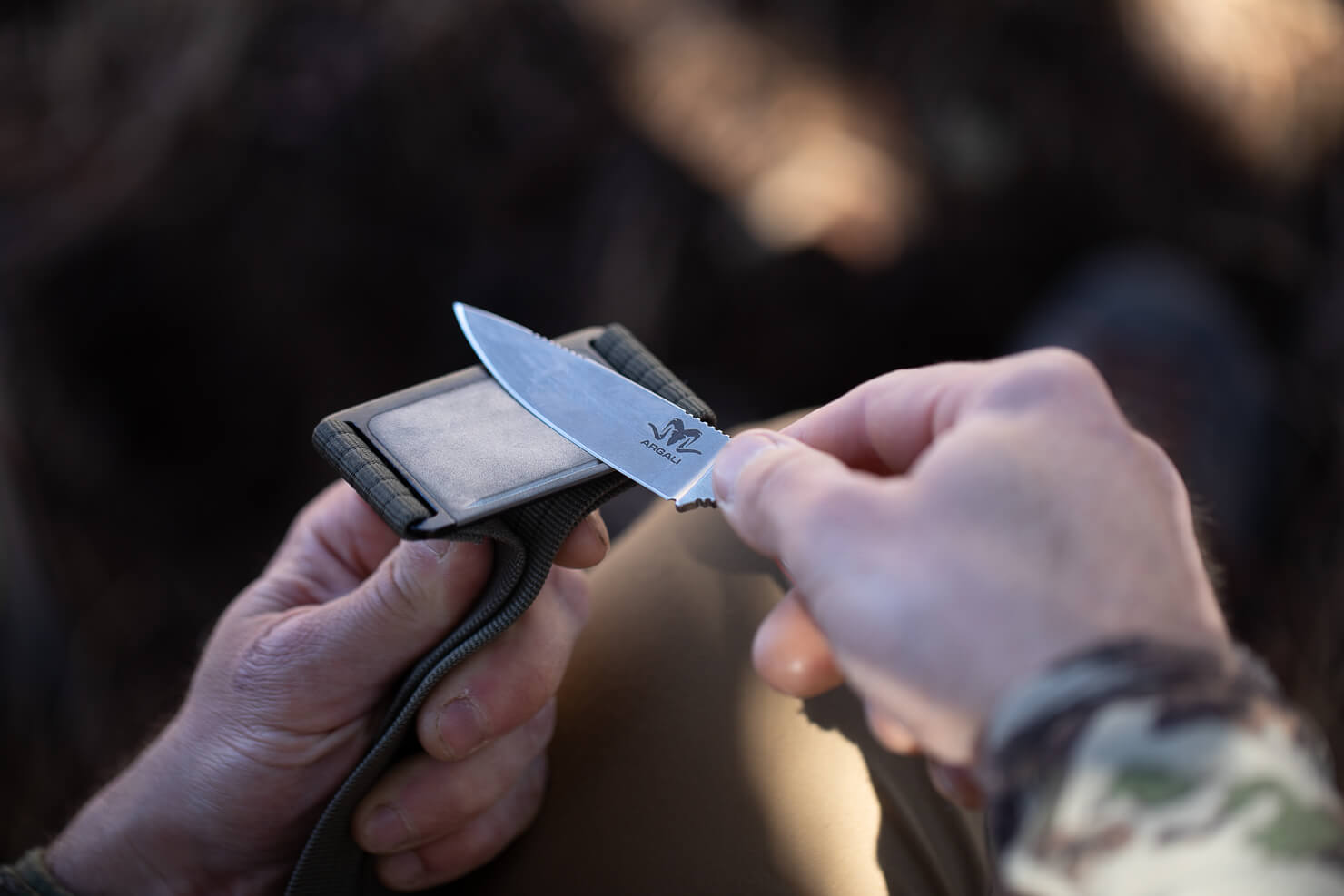
And if you have damaged your knife edge or completely smashed it, start with the diamond plate to sharpen your knife. Find your bevel angle and with light pressure, move the edge of your knife towards the bevel edge. Again, make sure to use as close to the correct bevel angle as you can. It may take more strokes to accomplish the desired shape, but once you have 10-15 strokes on each side, visually inspect your knife to see if the bevel shape is where you want it. If it is, move to the carbide rod (10 strokes on each side) for honing, and then on to the leather strop to even out any burs (10-15) strokes alternating sides.
For most field applications, the leather strop and carbide rod will work for the vast majority of sharpening needs.
